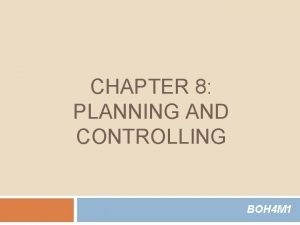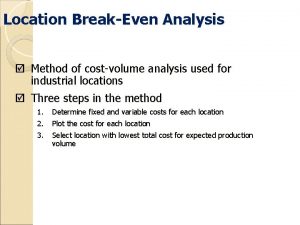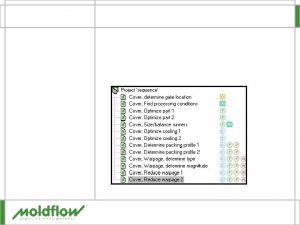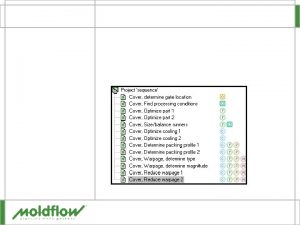PORTFOLIO MANAGEMENT Steps involved in Portfolio management process










- Slides: 10

PORTFOLIO MANAGEMENT



Steps involved in Portfolio management process: • Identification of objectives and constraints. • Selection of the asset mix. • Formulation of portfolio strategy • Security analysis • Portfolio execution • Portfolio revision • Portfolio evaluation.

1. Identification of objectives and constraints The primary step in the portfolio management process is to identify the limitations and objectives. The portfolio management should focus on the objectives and constraints of an investor in first place. The objective of an Investor may be income with minimum amount of risk, capital appreciation or future provisions. The relative importance of these objectives should be clearly defined.

2. Selection of the asset mix The next major step in portfolio management process is identifying different assets that can be included in portfolio in order to spread risk and minimize loss. In this step, the relationship between securities has to be clearly specified. Portfolio may contain the mix of Preference shares, equity shares, bonds etc. The percentage of the mix depends upon the risk tolerance and investment limit of the investor.

3. Formulation of portfolio strategy After certain asset mix is chosen, the next step in the portfolio management process is formulation of an appropriate portfolio strategy. There are two choices for the formulation of portfolio strategy, namely • an active portfolio strategy; and • a passive portfolio strategy. An active portfolio strategy attempts to earn a superior risk adjusted return by adopting to market timing, switching from one sector to another sector according to market condition, security selection or an combination of all of these. A passive portfolio strategy on the other hand has a predetermined level of exposure to risk. The portfolio is broadly diversified and maintained strictly.

4. Security analysis requires the sources of information on the basis of which analysis is made. Securities for the portfolio are analyzed taking into account of their price, possible return, risks associated with it etc. As the return on investment is linked to the risk associated with the security, security analysis helps to understand the nature and extent of risk of a particular security in the market. Security analysis involves both micro analysis and macro analysis. For example, analyzing one script is micro analysis. On the other hand, macro analysis is the analysis of market of securities. Fundamental analysis and technical analysis helps to identify the securities that can be included in portfolio of an investor.

5. Portfolio execution When selection of securities for investment is complete the execution of portfolio plan takes the next stage in a portfolio management process. Portfolio execution is related to buying and selling of specified securities in given amounts. As portfolio execution has a bearing on investment results, it is considered one of the important step in portfolio management. 6. Portfolio revision is one of the most important step in portfolio management. A portfolio manager has to constantly monitor and review scripts according to the market condition. Revision of portfolio includes adding or removing scripts, shifting from one stock to another or from stocks to bonds and

7. Performance evaluation Evaluating the performance of portfolio is another important step in portfolio management. Portfolio manager has to assess the performance of portfolio over a selected period of time. Performance evaluation includes assessing the relative merits and demerits of portfolio, risk and return criteria, adherence of the portfolio management to publicly stated investment objectives or some combination of these factors. The quantitative measurement of actual return realized and the risk borne by the portfolio over the period of investment is called for while evaluating risk and return criteria. They are compared against the objective norms to assess the relative performance of the portfolio. Performance evaluation gives a useful feedback to improve the quality of the portfolio management process on a continuing basis.
 Steps involved in portfolio management process
Steps involved in portfolio management process Explain the steps involved in controlling process
Explain the steps involved in controlling process Process of making pochampally sarees
Process of making pochampally sarees Output design paper
Output design paper Simplex method steps
Simplex method steps Steps involved in developing and running a local applet
Steps involved in developing and running a local applet Types of admission procedure
Types of admission procedure Location break even analysis example
Location break even analysis example Steps involved in historical research
Steps involved in historical research Project portfolio process 8 steps
Project portfolio process 8 steps Exchanging messages
Exchanging messages



















